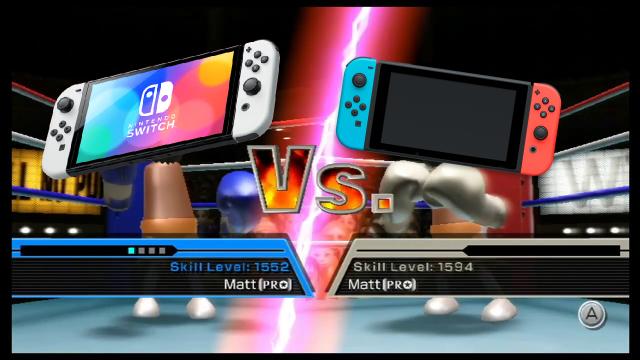Nintendo has finally announced its highly-anticipated follow up to the Nintendo Switch, but unfortunately, the OLED is not the Pro we were all hoping for.
Sure, it’s decked out with a schmick OLED screen, but the specs sure do sound familiar.
Let’s take a look at how the Switch OLED stacks up against the regular Switch and the Lite.
The Specs
| Nintendo Switch OLED | Nintendo Switch | Nintendo Switch Lite | |
|---|---|---|---|
| Screen Size | 7-inch OLED | 6.2-inch LCD | 5.5-inch LCD |
| Dimensions | 102mm x 239mm x 13.9mm | 102mm x 239mm x 13.9mm | 91.1mm x 208mm x 13.9mm |
| Resolution |
1280×720 |
1280×720 | 1280×720 |
| Weight | 320g | 297g | 275g |
| Battery Life | 4.5-9 hours | 4.5-9 hours | 3-7 hours |
| CPU/GPU | NVIDIA Custom Tegra processor | NVIDIA Custom Tegra processor | NVIDIA Custom Tegra processor |
| Storage | 64GB internal | 32GB internal | 32GB internal |
| Video Output | 1080p via HDMI
720p via built-in screen |
1080p via HDMI
720p via built-in screen |
720p via built-in screen |
| Colours | White, Neon (Red/Blue) | Grey, Neon (Red/Blue) | Blue, Grey, Yellow, Turquoise, Pink |
| Internal Battery | Lithium-ion battery / 4310mAh | Lithium-ion battery/4310mAh | Lithium ion battery / 3570mAh |
| Price | $539 | $469.95 | $329.95 |
What Are The Major Differences Between The Switch And The OLED Switch?
For the purpose of this story, we’re just gonna go ahead and ignore the Switch Lite. It fulfils a different need and isn’t really comparable to the OLED.
[related_content first=”1709887″]
So let’s get down to business.
The most obvious difference is the inclusion of the OLED screen, which is almost a full inch bigger than the standard model and delivers a nicer OLED display.
The major benefit of OLED is blacker blacks, so even if you’re playing late at night, the darkest parts of your screen won’t end up being that annoying grey colour. Nope. We’re talking pitch black, baby.
Similarly, the colours will be brighter and more vibrant as the OLED screen will likely allow Nintendo to aim for similar colour displays to what we’re seeing on iPhones right now.
Additionally, the console comes in a brand new, white design with smaller screen borders for a more streamlined look. But thankfully, the joycons are the same size, which means you’ll still be able to connect your old ones to the new device.
The only other major difference is the internal storage, which has been doubled to 64GB. However, it’s worth noting that all Switch models come with the option to add external memory, so this is great but not earth shaking for consumers.
But realistically speaking, the console is the same but with a better screen and native audio. Battery life, processor and resolution are all identical to the model we’ve already got. And the game card slot is the same, which means we won’t be seeing OLED-exclusive games.
And when you play it while docked, there will be no difference whatsoever. The output will still be 1080p to a TV and the audio will be the same.
Basically, this is just a refreshed version of the standard model (released in 2019), which was already a refreshed version of the original Nintendo Switch (2017).
However, this doesn’t necessarily mean we won’t be seeing a Switch Pro in future, so if you’re not dying to get your hands on a slightly bigger and better screen, it might be worth holding out a little longer.
TL;DR: Games will feel and play the same, but will look marginally better when you play it as a handheld.
You can preorder the Nintendo Switch OLED now.
